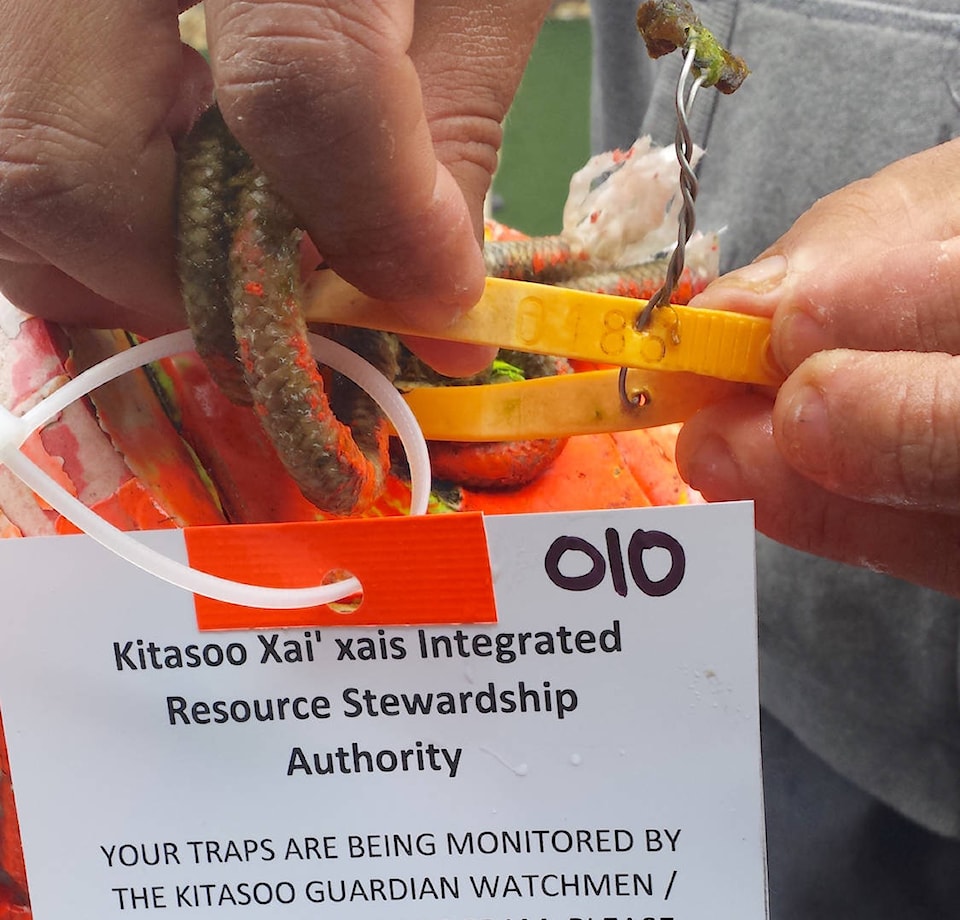Ernie Mason knows that even 18 days is a long time to soak a crab trap.
That’s the legal limit for leaving a trap underwater. Any longer and the crab are likely to die and go to waste.
Two years ago, Mason and his wife Sandy Hankewich flagged a set of oversoaked traps just north of their home in Klemtu. There were 339 traps in all, and over half were soaked for a month or more.
RELATED: Father and son fined $31,000 for crab fishing offences
It wasn’t the first time Mason has seen something similar — since 1993, he has worked the waters around Klemtu as part of the Kitasoo/Xai’xais fisheries program.
But this time was different. This time, Mason and Hankewich had a homemade system of waterproof, date-stamped trap tags and photo evidence to match.
And this time, as the Observer reported in September, their work led to a $31,200 fine against two lifelong fishermen, not only for oversoaking the traps near Klemtu, but also for cutting up live halibut for bait while fishing north of Masset.
Most of that penalty will now fund fish habitat conservation projects around Haida Gwaii.
“We need to do everything we can to keep an eye on the food source, for the future generations,” Mason said.
Hankewich agreed.
“There’s a very heavy reliance on food fish here,” she said, speaking of Klemtu.
While two years was a long wait, Mason and Hankewich were happy with the end result, even though they had hoped to present their evidence in court (the fishermen pled guilty before they got a chance).
But they say it could all go much better if only local people had the authority to step up enforcement.
Mason said in this case and others, they have reported fisheries violations to the DFO office in Bella Bella.
“We’ve called before and been told they have a trip planned in a week or 10 days, then hear nothing,” he said, noting that the office is a three-hour boat ride away.
“I think they’re pretty short-staffed there, too.”
In other cases of suspected oversoaking, Mason said the DFO asked if they had a set date for the traps — something that is only recorded in the fishermen’s log books or the records of third-party monitoring companies.
So, like big-city parking cops who chalk tires to see if drivers are over-parking their cars, Hankewich and Mason came up with a system of waterproof tags that let crab fishers know their traps are being monitored.
A note on the tag asks the fishers to remove them when they pull the trap, and there is a phone number for the Kitasoo/Xai’xais Stewardship Authority if they have any questions.
When Mason and Hankewich found the 339 oversoaked traps in 2016, they notified the local Kitasoo/Xai’xais Guardian Watchmen as well as the DFO — it’s a grassroots effort that grew out of the Haida Gwaii Watchmen program.
Sam Harrison, a lawyer and consultant with the Kitasoo/Xai’xais Stewardship Authority, said the Watchmen knew the traps were down, knew they were killing crabs, but did not have the authority to pull them.
Had DFO worked more closely with the Watchmen, Harrison said, many crabs could have been protected and the penalties still imposed.
“It’s an ongoing issue that we don’t have that authority under Canadian law,” Harrison said.
“The Guardian Watchmen here really want to work with Canada, and to do the monitoring for DFO.”
Harrison noted that the Kitasoo/Xai’xais have authority to enforce respectful fishing under hereditary, Indigenous law that goes back thousands of years.
“What we’re trying to do is bring that authority in line with Canada’s authority — not to displace Canada’s authority entirely, that’s not the goal.”
“The goal is to work in partnership with Canada’s rules.”
